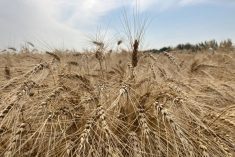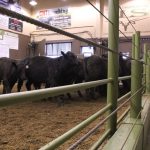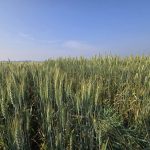Winnipeg — The Manitoba cattle market has been slow ahead of the fall calf run, but producers are busy trying to find feed, which hasn’t been easy. Nationally, cattle markets were rocked by turbulence in global economies.
“Feed right now seems to be hit or miss across the province. We’re short because of the late spring that we had, and the drought in certain areas,” said Melinda German, general manager at Manitoba Beef Producers, based in Winnipeg.
Most producers are hoping to find feed in the province because supplies are limited farther west due to drought.
Read Also

Canada appoints new envoy to India
Canada announced on Thursday it had appointed a new high commissioner, or ambassador, to India in the latest sign of improving ties between the two trading partners.
However, Keith Cleaver, manager at Heartland Livestock Services in Brandon, said most producers in that area have been fortunate.
“I think most are going to be OK, but not all. There’s quite a bit of green feed put up, silage,” he said.
He added that pastures have been doing well due to recent rains.
While the cattle market has been hitting the summer doldrums, it will pick up toward the end of September when the calf run starts. However, German doesn’t expect cattle prices to move much higher.
“We’ll see what’s going to happen in the market. We still have an inventory drop here in Manitoba, as in other parts of Canada. We really haven’t seen the herd rebuild yet so it’ll be interesting to see what happens in the fall run.”
But despite Canada seeing smaller herds, German doesn’t think prices will move higher, believing they will stay “status quo.”
However, the status quo is pretty good, said Anne Wasko, a market analyst with Gateway Livestock Marketing, in Taber, Alta.
“Prices still have been very strong. A weaker Canadian dollar has helped that again this week, and so it’s certainly poised as we head into the fall run.”
Cattle are not insulated from outside global pressures, Wasko said, and so the market has seen a wild week.
The Chinese stock market fell dramatically on Aug. 24, causing global stock, energy, and currency markets to follow, but by Aug. 28, most markets had settled down, though not without a significant amount of bouncing around.
Fed-cattle markets usually hit a low in the summer, and so the shake-up came at a time when prices were trying to find a summer low.
“And that’s kind of kept the pressure on in the west,” Wasko said.
However, she says producers have a good market to sell into, as there is a lot of interest in feeder cattle, and prices have been strong.
















